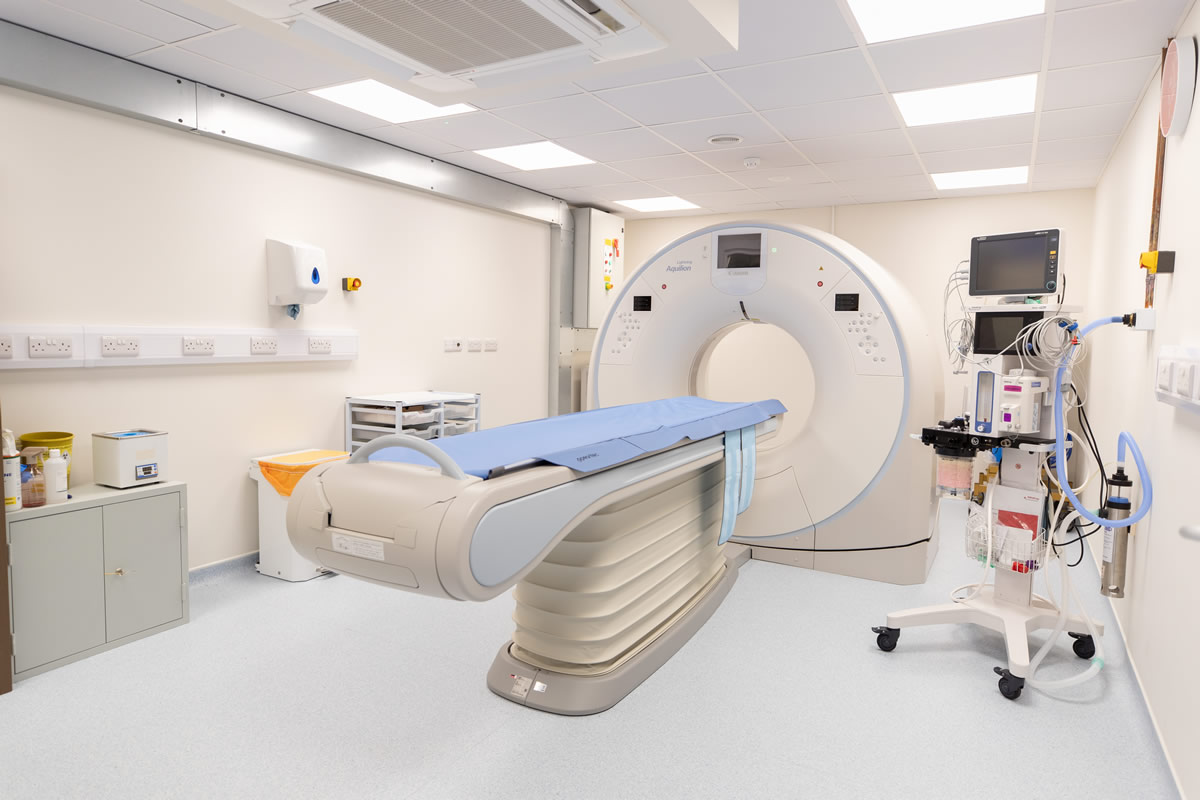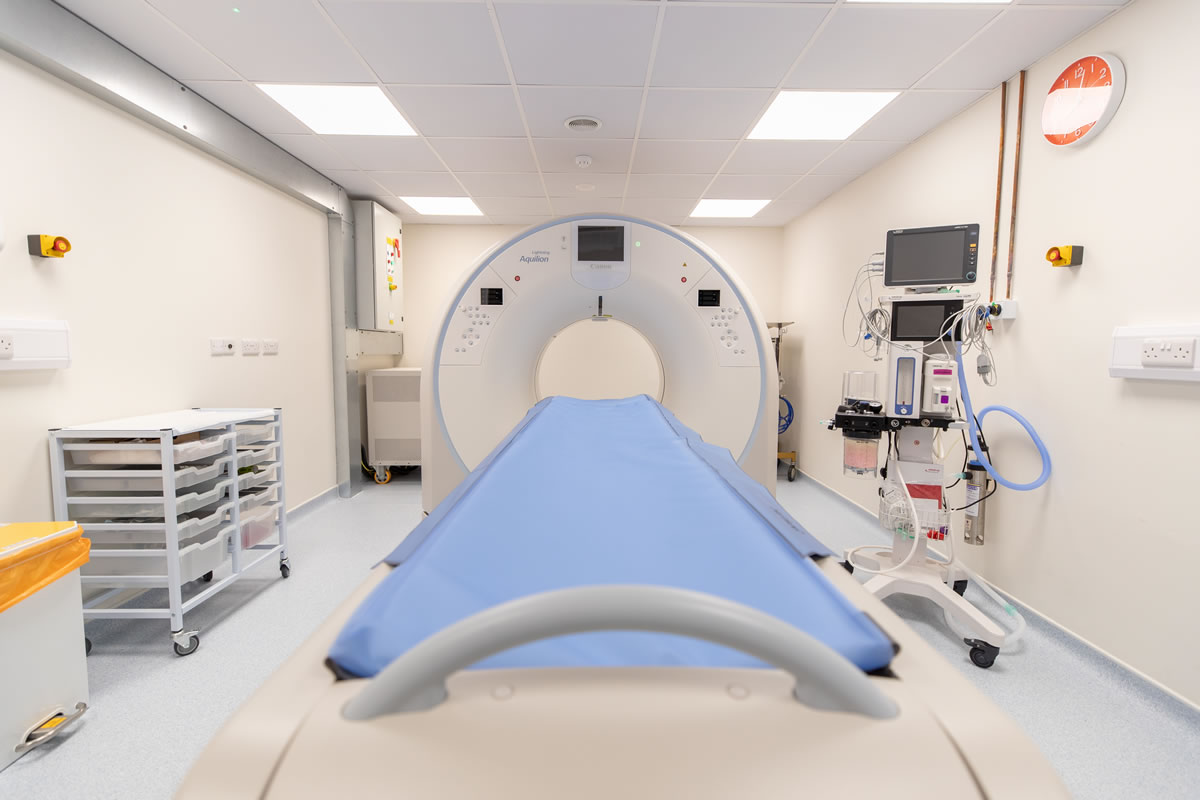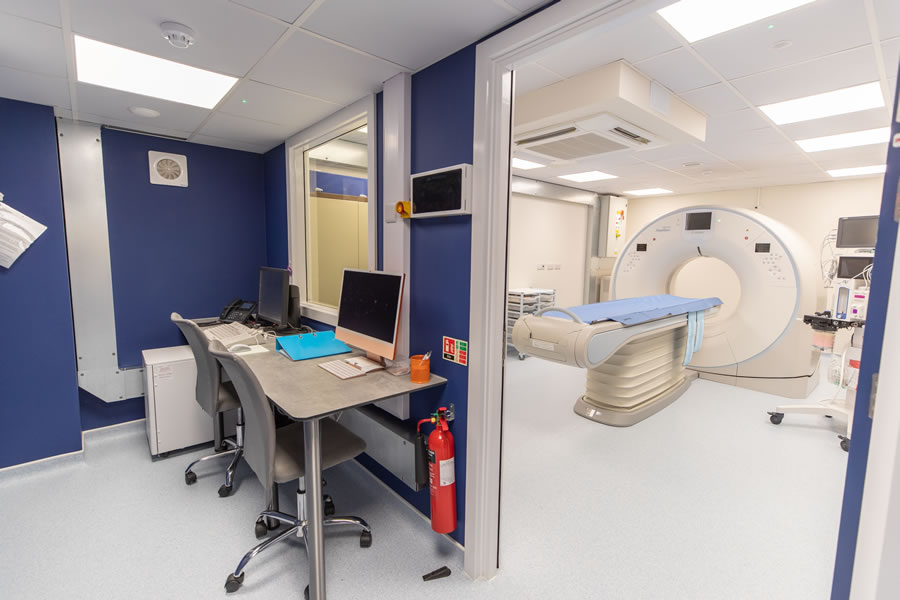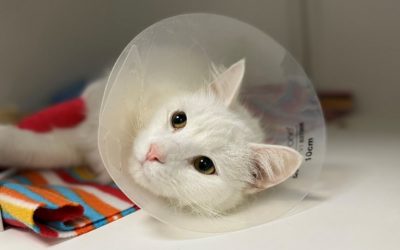At Bicester Vets, we are committed to providing the highest standard of diagnostic care for your pet. We have recently invested in a CT scanner (Computed Tomography), an advanced and powerful imaging technique that helps us look inside your pet’s body in incredible detail—without surgery.
What Is a CT Scan?
A CT scan is a type of imaging that uses X-rays and computer technology to create detailed, cross-sectional images of the body. Unlike traditional X-rays, which produce flat, two-dimensional images, a CT scan provides a 3D view, allowing us to see internal organs, bones, blood vessels, and soft tissues much more clearly.
How Does It Work?
During a CT scan:
- To ensure stillness and comfort, pets are usually placed under general anaesthesia for the scan.
- Your pet is placed on a motorised table that slowly moves through a large, donut-shaped machine (the CT scanner).
- The scanner takes multiple X-ray images from different angles around the body.
- A computer processes these images to create detailed cross-sectional “slices” and 3D images.
- Depending on the area we are imaging, we may do a second scan after injecting contrast fluid into the blood stream.
- The scan is very quick, and the whole process will be finished in around half an hour.
Why Might My Pet Need a CT Scan?
CT scans are especially helpful for diagnosing complex issues, including:
- Cancer and tumour detection (location, size, and spread)
- Head and brain problems (neurological conditions, skull trauma)
- Spinal issues (disc disease, vertebral abnormalities and fractures)
- Orthopaedic conditions (joint injuries, fractures, developmental problems)
- Nasal, sinus and ear problems
- Dental and jaw assessments
- Chest or abdominal disorders
Your veterinarian will recommend a CT scan if it’s the most effective way to get a complete and accurate picture of what’s going on inside your pet.
Benefits of CT Scanning for Pets
- Fast and non-invasive: Offers a quick and detailed view without exploratory surgery.
- High-resolution imaging: Detects problems that may not be visible on regular X-rays.
- More accurate diagnosis: Helps pinpoint the exact location and nature of a problem.
- Better treatment planning: Improves surgical accuracy and overall treatment outcomes.
- Monitoring disease progression or response to treatment
- NB – whilst the CT images give great clarity about the size and location of pathology, they can’t always tell you exactly what the disease pathology is. In some cases a biopsy is required to give an absolute diagnosis.


Is CT Safe for My Pet?
Yes. The scan uses a controlled amount of radiation, and because the scan is so quick, the exposure is minimal. Anaesthesia is used safely and monitored carefully by our veterinary team throughout the procedure.
What Happens After the Scan?
Once the scan is complete:
- Your pet is monitored as they recover from anaesthesia. Pets will remain on IV fluids for 4 hours if contrast has been used.
- A veterinary radiologist or specialist will analyse the images. This usually takes several days but can be sped up by paying an “Urgent Fee”.
- Your vet will then review the results with you and discuss the next steps in diagnosis or treatment.
Have Any Questions?
If you have any questions about CT scanning or want to know whether it’s the right choice for your pet, please don’t hesitate to ask a member of our team. We’re here to help guide you every step of the way.
Providing advanced care for the pets you love.

Exciting News – Bicester Vets Is Now Employee-Owned!
This ensures that Bicester Vets remains independent, locally rooted, and run for the benefit of its staff and clients
Mash and his Detached “Abs”
Mash was rushed into Bicester Vets after his owners felt he “wasn’t right” and didn’t seem able to stand properly at home
Belle had her salivary gland removed!
If left untreated, salivary mucocoeles can continue to grow and cause pain









